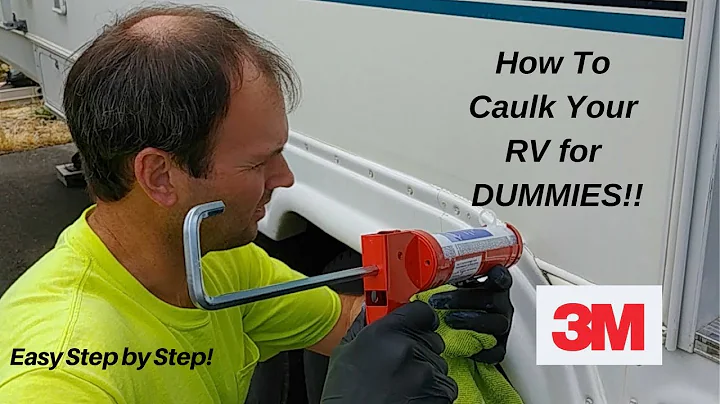Master the Art of Wood Stain Removal with These Proven Techniques
Table of Contents
- Introduction
- The Importance of Wood Stain Removal
- Tip 1: Letting the Stripper Stay on Longer
- Tip 2: Using a Proper Scraper
- Tip 3: Working with Steel Wool
- Tip 4: Neutralizing the Stain
- Tip 5: Sanding the Wood Surface
- Using an Orbital Sander for Better Results
- Conclusion
Introduction
In this article, we will discuss effective tips and techniques for removing wood stain. Whether you're working on a furniture restoration project or trying to get rid of an old stain, these methods will help you achieve remarkable results. Wood stain removal can be a meticulous process, but with the right knowledge and tools, you can achieve a beautifully restored wood surface. Let's dive into the world of wood stain removal and discover the secrets to success.
The Importance of Wood Stain Removal
Wood stain removal is an essential part of any woodworking project or furniture restoration. Over time, stains can fade, become worn, or simply no longer match the desired aesthetic. Removing old stains allows you to start with a clean slate and brings out the natural beauty of the wood. Additionally, removing stain from the wood surface prepares it for refinishing or applying a new coat of stain. By taking the time to remove old stains properly, you can ensure a smooth and impeccable finish.
Tip 1: Letting the Stripper Stay on Longer
One crucial tip for effective wood stain removal is allowing the stripper to stay on the wood surface for as long as possible. Applying a generous amount of stripper and giving it time to work creates a film on top of the wood, which helps break down the stain. The longer the stripper sits, the more stain it will remove from the wood. This technique is especially useful when dealing with stubborn or heavily stained surfaces. Remember, patience is key when it comes to achieving desirable results.
Tip 2: Using a Proper Scraper
When removing wood stain, the type of scraper you use plays a significant role in the outcome. It is essential to choose a scraper that effectively loosens the stain and minimizes the risk of damaging the wood. While plastic or phenolic scrapers can be used, they may wear down quickly due to the stripping agent. To achieve better results, it is recommended to use an old scraper with dull edges. This minimizes the chances of gouging the wood surface during the stripping process. Always scrape with the direction of the grain to ensure a smooth and even finish.
Tip 3: Working with Steel Wool
Steel wool is an excellent companion when it comes to wood stain removal. It helps in further loosening and removing the stain, leaving you with a clean surface. Choose the grade of steel wool based on the intensity of the stain and the wood type you're working with. Finer grades, such as 0000 or 000, are suitable for delicate surfaces, while coarser grades like 1 or 2 are effective for tougher stains. Dip the steel wool into the stripper and work it with vertical motions along the grain. This method ensures effective stain removal while being cautious around the edges.
Tip 4: Neutralizing the Stain
After stripping the wood and removing the stain, it is crucial to neutralize the surface. Neutralizing prevents any remaining chemicals from interfering with the subsequent steps of the restoration process. While water can be used for this purpose, it is recommended to use sawdust instead. Apply a small amount of sawdust to the surface, rubbing it in all directions to ensure complete neutralization. This step prepares the wood for further treatment and prevents any interference with sanding or finishing.
Tip 5: Sanding the Wood Surface
Sanding is an essential part of wood stain removal, as it smoothens the wood surface and prepares it for refinishing or re-staining. After neutralizing the stain, use a medium-coarse piece of dry steel wool (around 0-1 grade) to sand the surface gently. This not only removes any remaining pulp or wood fibers but also aids in drying the wood. Once the desired smoothness is achieved, proceed with regular sanding using sandpaper. Pay careful attention to the direction of the grain, as sanding against it can lead to scratches and imperfections.
Using an Orbital Sander for Better Results
For more significant wood stain removal projects, an orbital sander can be a handy tool. The orbital sander effectively removes stain from larger surfaces, saving time and effort. When using an orbital sander, it is crucial to keep it flat most of the time. However, for precise areas or edges, slightly raising the sander can help define the targeted region. Combining hand sanding and orbital sanding can yield excellent results, removing old stains and preparing the wood surface for a fresh look.
Conclusion
Wood stain removal is a skill that every woodworking enthusiast or furniture restorer should possess. By following the tips provided in this article, you can effectively remove old stains, breathe new life into wood surfaces, and achieve impressive results. Remember to exercise caution throughout the process, work with the grain, and choose the appropriate tools and materials for each step. With patience and dedication, you can restore the natural beauty of wood and create stunning pieces that stand the test of time.
【FAQ】
Q: Is it necessary to let the stripper stay on the wood surface for a long time?
A: Allowing the stripper to stay on the wood surface for an extended period is crucial when aiming to remove stubborn or heavily stained surfaces. The longer the stripper sits, the more effectively it breaks down the stain.
Q: Can I use plastic scrapers for wood stain removal?
A: While plastic scrapers can be used, they tend to wear down quickly due to the stripping agent present. It is recommended to use an old scraper with dull edges to minimize the risk of damaging the wood surface.
Q: How should I neutralize the stain after stripping?
A: Instead of using water, sawdust can be applied to neutralize the stain effectively. Rub the sawdust in all directions to ensure complete neutralization and to prepare the wood for further treatment.
Q: Can I use an orbital sander for wood stain removal?
A: Yes, an orbital sander is a useful tool for removing old stains from larger surfaces. It can save time and effort, but it is important to keep it flat most of the time and slightly raise it for precise areas or edges.







